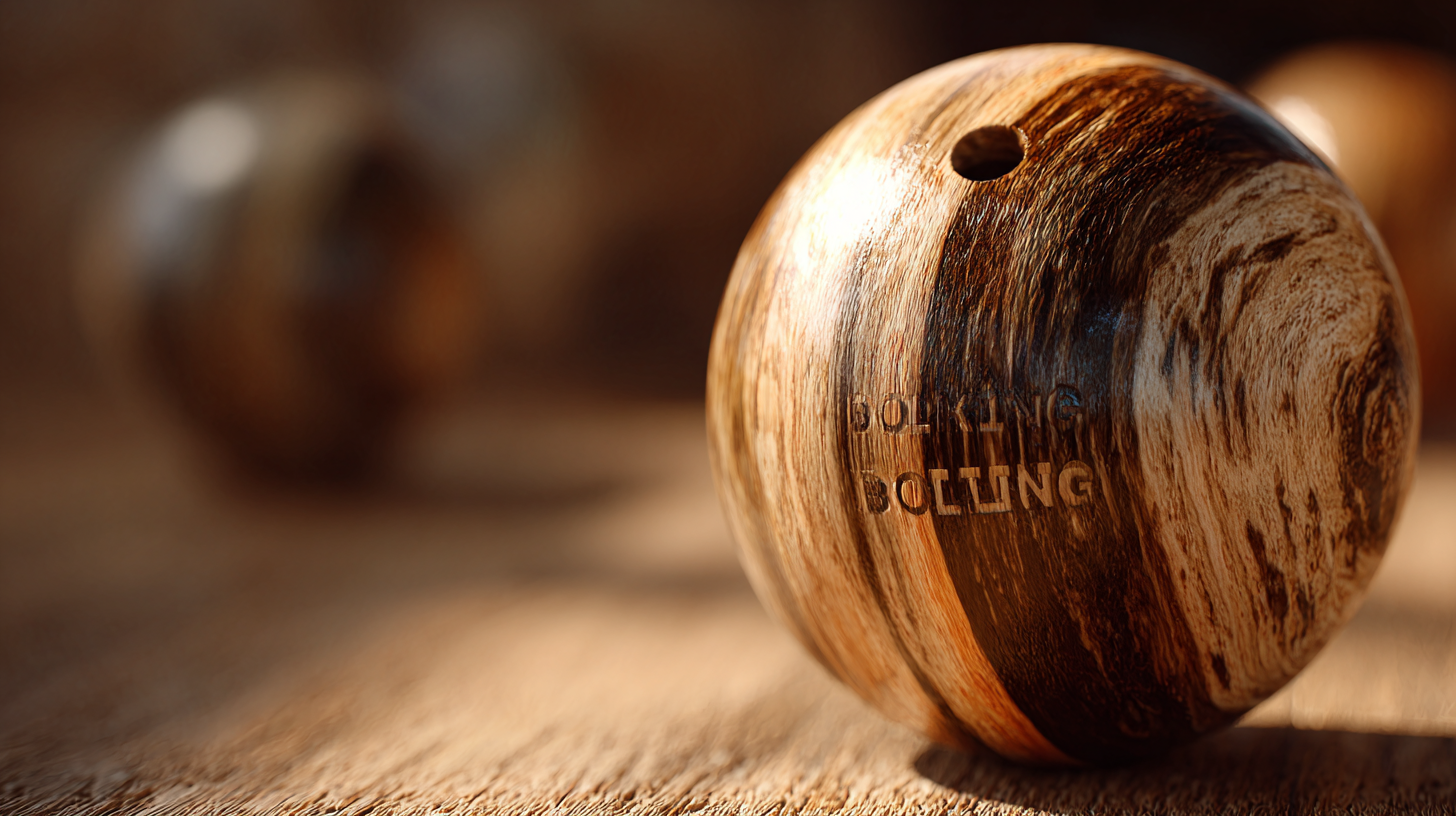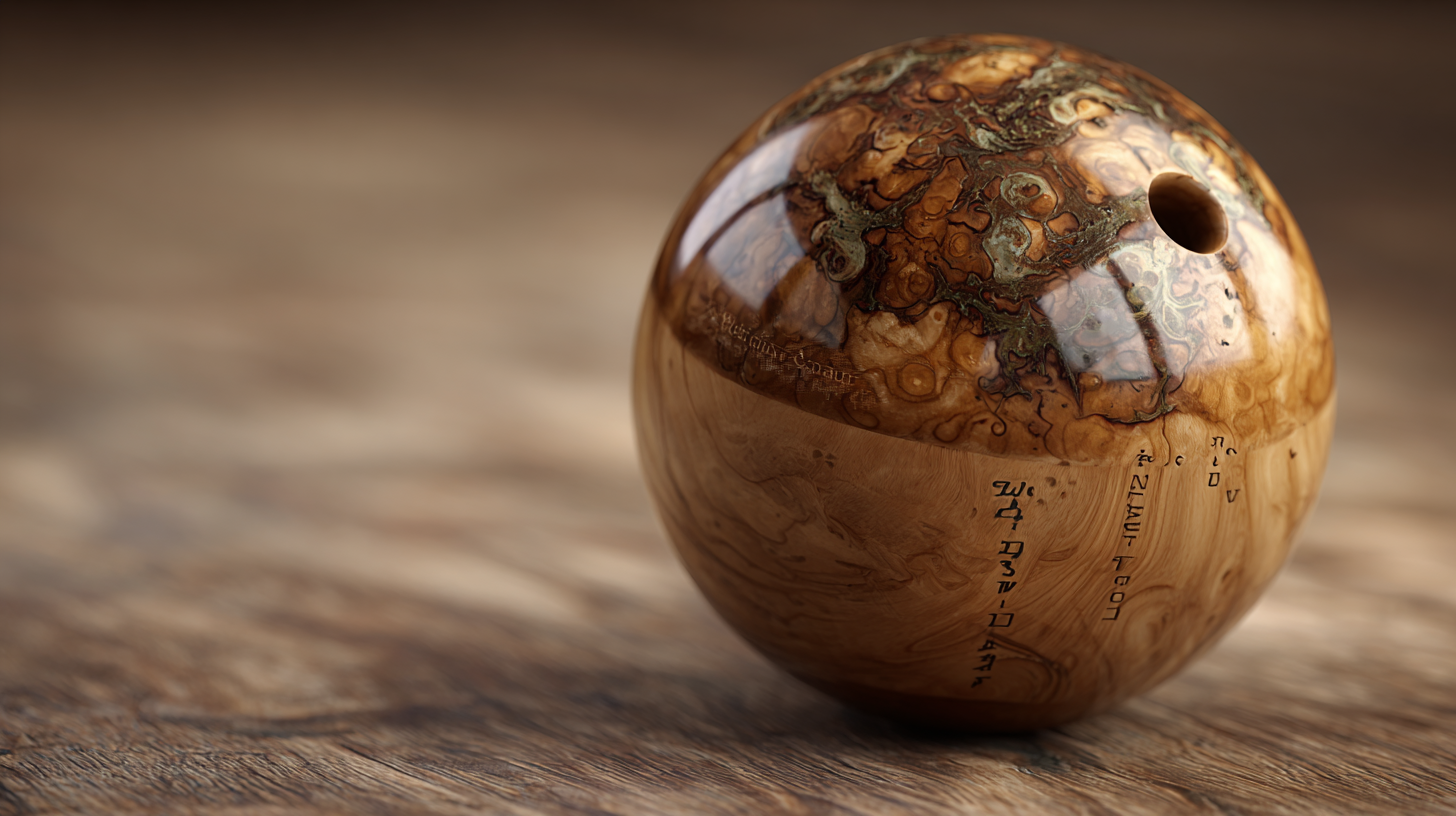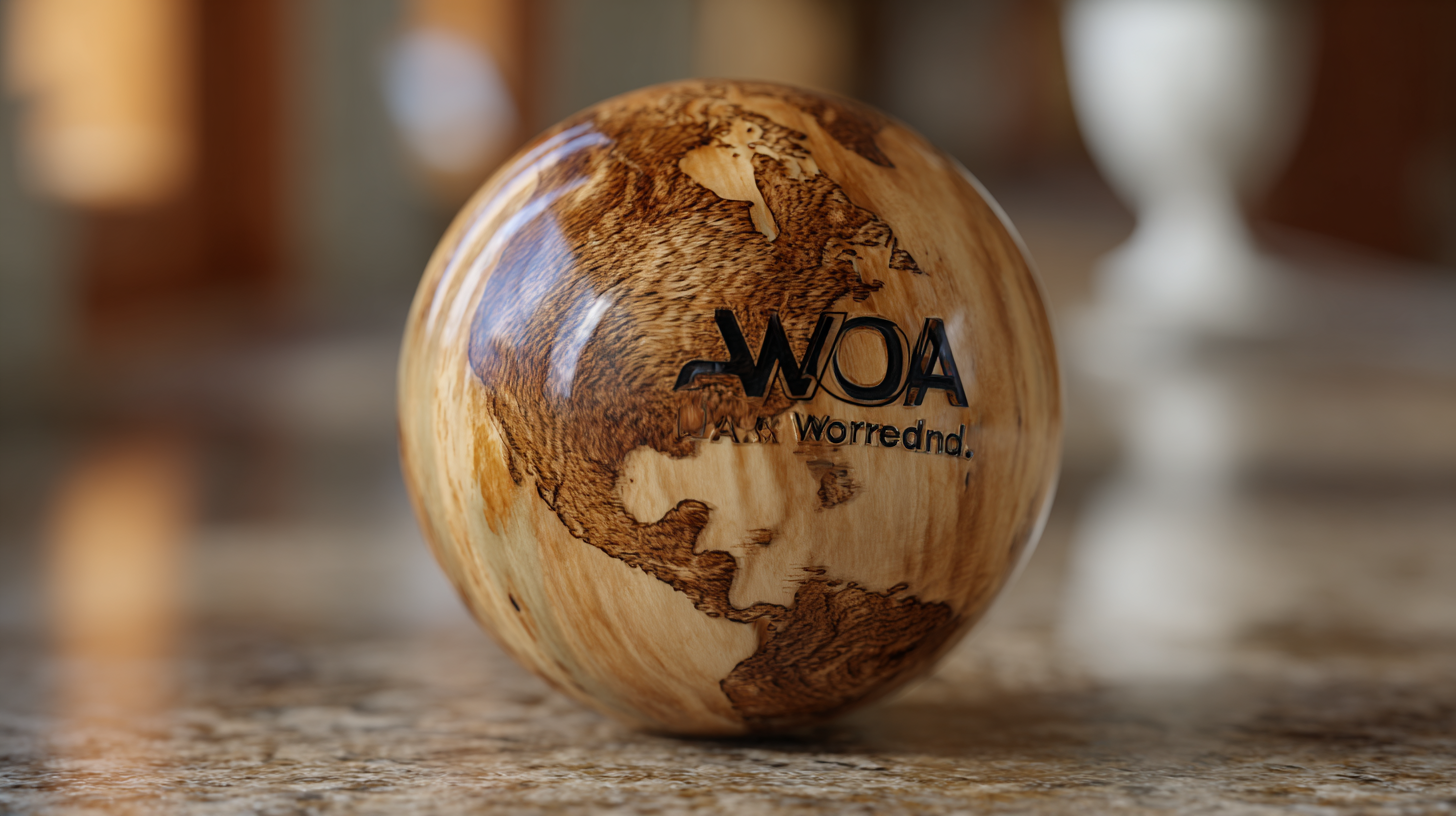As the bowling industry continues to evolve, 2025 is poised to unveil groundbreaking advancements in bowling technology, particularly with a renewed emphasis on the craftsmanship of the Wooden Bowling Ball. Recent market research indicates that the global bowling market is expected to reach USD 4.3 billion by 2025, with a significant portion of growth driven by innovations in equipment design and materials. According to a report by IBISWorld, approximately 40% of bowlers express a desire for more eco-friendly and sustainable options, which has led manufacturers to revisit traditional wooden materials for bowling balls.

This trend not only reflects a growing consumer preference for authenticity and tactile experience but also signals a potential resurgence of the Wooden Bowling Ball as a prominent choice among enthusiasts and casual players alike. As we delve deeper into the technology trends that are set to shape the future of bowling, it becomes essential to explore how these wooden innovations can enhance performance, sustainability, and overall enjoyment of the game.
The landscape of bowling has seen a notable transformation with the incorporation of advanced technology, especially regarding wooden bowling balls. Historically, wooden balls were the standard; however, modern innovations have significantly enhanced their performance. The evolution of materials, combined with precision engineering, allows for a more balanced and controlled roll. As manufacturers integrate cutting-edge technology, players can expect a new era of wooden balls featuring improved weight distribution and durability, ensuring a consistent experience on the lanes.
When selecting a wooden bowling ball for optimal performance, consider these tips: First, check the ball's grip. A proper grip enhances control, enabling precise shot execution. Secondly, pay attention to the weight. It should be proportional to your strength and skill level to avoid fatigue and maximize effectiveness. Lastly, maintenance is crucial. Regularly polish and clean the surface to maintain its texture and prevent any wear that could affect its performance.
As we look to 2025, the marriage of tradition and technology in wooden bowling balls will surely captivate enthusiasts, providing them with tools to enhance their game while honoring the rich history of bowling.
| Feature | 2023 Trends | 2025 Predictions | Impact on Performance |
|---|---|---|---|
| Material Composition | Traditional wood types | Composite wood and additives | Enhanced durability and reaction |
| Weight Distribution | Standard weight options | Variable weight technology | Improved balance and control |
| Surface Finish | Natural wood finish | Synthetic advanced coatings | Better friction and hook potential |
| Data Analytics | Basic performance tracking | Real-time performance metrics | Fine-tuned play strategies |
| Sustainability | Limited eco-friendly options | Widespread use of sustainable materials | Positive environmental impact |
As the bowling industry continues to evolve, regulatory changes are playing a significant role in shaping the production of bowling balls. In 2025, advancements in technology alongside shifts in industry standards will likely impact how manufacturers develop and produce wooden bowling balls.
As reported, the global market for ping pong balls is projected to grow from $300 million in 2024 to $650 million by 2033, with a compound annual growth rate of 8.7%. This upward trend highlights the increasing consumer interest in precision and performance, which could similarly influence the bowling sector.
Moreover, the blood products industry is also undergoing notable transformations due to stricter regulatory frameworks. These frameworks ensure that the materials used in various sports equipment, including bowling balls, meet enhanced safety and quality standards. Companies in this sector must adapt their production methods to comply with these regulations, which ultimately fosters innovation and quality assurance. As with the microbeads in drug formulations, the materials used in producing bowling balls are being scrutinized closely, leading to advancements that enhance player experience and safety on the lanes. As we look to the future, these regulatory changes will undoubtedly influence the trajectory of bowling ball production, pushing manufacturers to innovate and comply with evolving standards.
The landscape of bowling has significantly evolved, particularly with the integration of material innovations that enhance the durability and playability of wooden bowling balls. Recent industry reports indicate that advancements in composite materials and manufacturing techniques have led to a 30% increase in the longevity of wooden balls. This is crucial for both recreational bowlers and professionals who rely on equipment longevity to maintain performance. For example, the introduction of reinforced wood blends has mitigated the common wear and tear associated with frequent use, thus promising a more consistent playing experience.
Moreover, the playability of wooden bowling balls has seen remarkable improvements through technological developments. Research highlights that balls constructed with modern treatments for moisture resistance have shown a 25% lower rate of performance degradation. This not only enhances the feel and responsiveness of the ball during play but also allows bowlers to achieve greater precision with their shots. As the bowling industry continues to embrace these technological trends, the future appears bright for enthusiasts looking for high-quality wooden bowling equipment.

As the bowling industry evolves, the call for sustainable solutions has become increasingly pronounced. In 2025, the demand for wooden bowling balls, known for their eco-friendly attributes, is expected to surge. According to a recent market analysis by Global Market Insights, the sustainable bowling products sector is projected to grow by 15% annually as consumers prioritize environmentally responsible choices. This shift not only reflects a change in consumer preferences but also aligns with the broader trend towards sustainability across various sports sectors.

To adapt to this trend, manufacturers are focusing on developing innovative wooden bowling balls that combine traditional craftsmanship with modern technology. For example, utilizing recycled wood and advanced resin coatings not only enhances durability but also promotes environmental responsibility. As a tip, bowlers looking to invest in wooden bowling balls should research brands that emphasize sustainable sourcing and production practices, ensuring their purchase supports environmentally friendly initiatives.
Furthermore, the integration of technology in the production process is leading to improvements in performance and customization. With advancements in precision engineering, consumers can expect wooden bowling balls that offer enhanced grip and weight distribution, tailored to individual bowlers' techniques. Bowlers should consider testing various wood types and finishes to find the perfect balance of aesthetic appeal and performance that suits their style.
As the bowling industry evolves, consumer preferences play a pivotal role in shaping the future design of bowling balls. Today's bowlers are increasingly looking for personalized experiences that cater to their specific playing styles and aesthetic choices. This trend is evident in the growing demand for custom designs, materials, and unique weight distributions that enhance performance. Manufacturers are now leveraging advanced analytics and customer feedback to create products that resonate with both amateur and professional bowlers, ensuring that their needs are met while still pushing the boundaries of traditional bowling ball design.
In 2025, we anticipate that technology will further influence the market, with innovations such as smart bowling balls equipped with sensors that provide real-time feedback on performance metrics. These enhancements not only cater to tech-savvy bowlers who crave data-driven insights but also help coaches and trainers to develop more effective training programs. As consumer preferences shift towards high-tech solutions and individualized designs, the industry will undoubtedly adapt, leading to a new era of bowling that marries tradition with advancement, ensuring that the sport remains engaging and relevant for generations to come.
